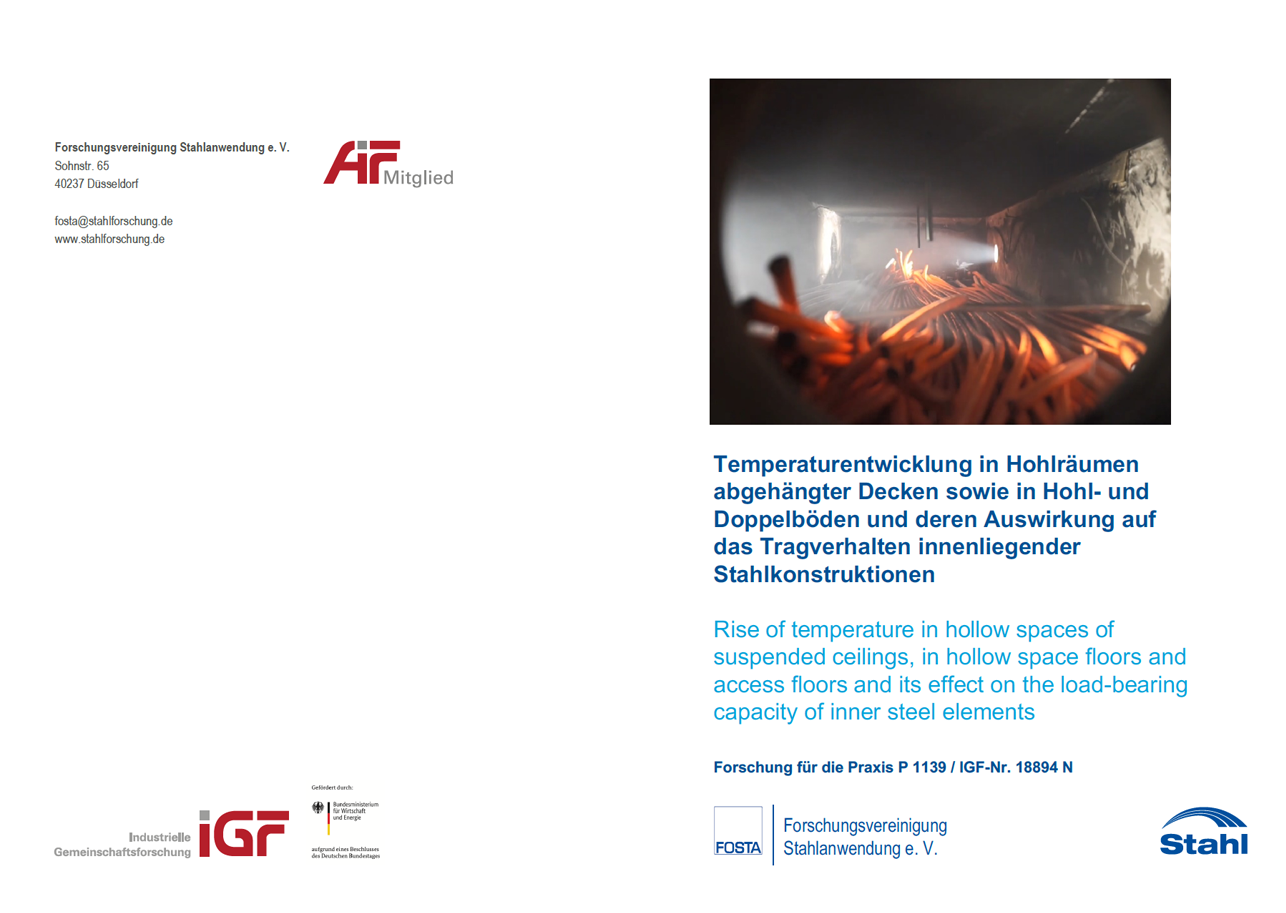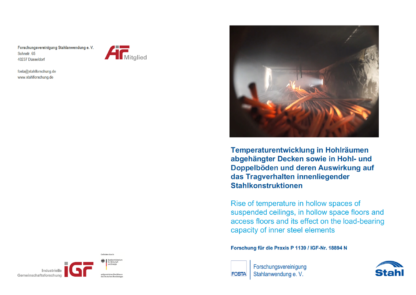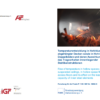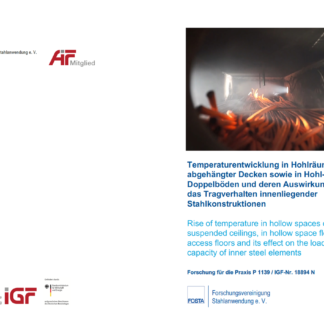Description
P 1139 – Rise of temperature in hollow spaces of suspended ceilings, in hollow space floors and access floors and its effect on the load-bearing capacity of inner steel elements
Modern buildings must fulfil functional, economic and ecological requirements in order to achieve climate protection goals. An integral part of these buildings is integrated and multifunctional slab systems, which includes the integrated and sustainable composite slab system InaDeck. Multifunctional slab systems must fulfil the performance criteria R (load-bearing capacity), E (fire integrity) and I (isolation) for a fire resistance time of up to 90 minutes according to the ISO standard fire curve applied below the slab system. In addition to the fire protection requirements for a fire scenario below the slab system, further fire protection requirements (R30) are demanded of the load-bearing structure of the slab system, which is located in suspended ceilings as well as in hollow and raised floors. Recent research results have shown that the fire protection requirements (R30) of the slab systems with the ISO standard fire curve is very conservative. The research project is dedicated to the question of the development of a natural fire scenario for the hollow space of the slab systems for a realistic assessment of the load-bearing behaviour of the slab system InaDeck in case of this developed natural fire scenario for the hollow space. In addition to the experimental investigations for the development of the natural fire scenario for the hollow space and the evaluation of the effects on the load-bearing behaviour of the slab system, the influence of fire protection isolation in suspended ceilings as well as in hollow and raised floors on the temperature development in the hollow space was analysed and the load-bearing behaviour of composite dowels in clothoidal shape was quantified at elevated temperatures.
Based on an online survey and interviews with experts, the fire loads (electric cables) and ventilation conditions within suspended ceilings as well as in hollow and raised floors were identified. This data collection provides the basis for small-scale investigations for the development of a natural fire scenario for the hollow space of suspended ceilings as well as hollow and raised floors. Furthermore, the influence of openings and fire protection sealing in suspended ceilings as well as in hollow and double floors on the temperature development within the hollow space was assessed with two large-scale fire tests. These two large-scale fire tests were carried out to assess the influence of the natural fire scenario on the load-bearing capacity of the slab system InaDeck. With the help of the large-scale fire tests, the effects of the natural fire scenario on the load-bearing behaviour are quantified. The load-bearing behaviour is decisively influenced by the composite dowels of the slab system. In order to assess the load-bearing behaviour of the slab system, it is necessary to know the values of the shear strength and the resistance against pull-out and pry-out of the composite dowel at elevated temperatures.
Published in:
January 2021
Authors:
Prof. Dr.-Ing. M. Mensinger, M.Sc. S. Koh, Prof. Dr.-Ing. P. Schaumann, M.Sc. P. Meyer




